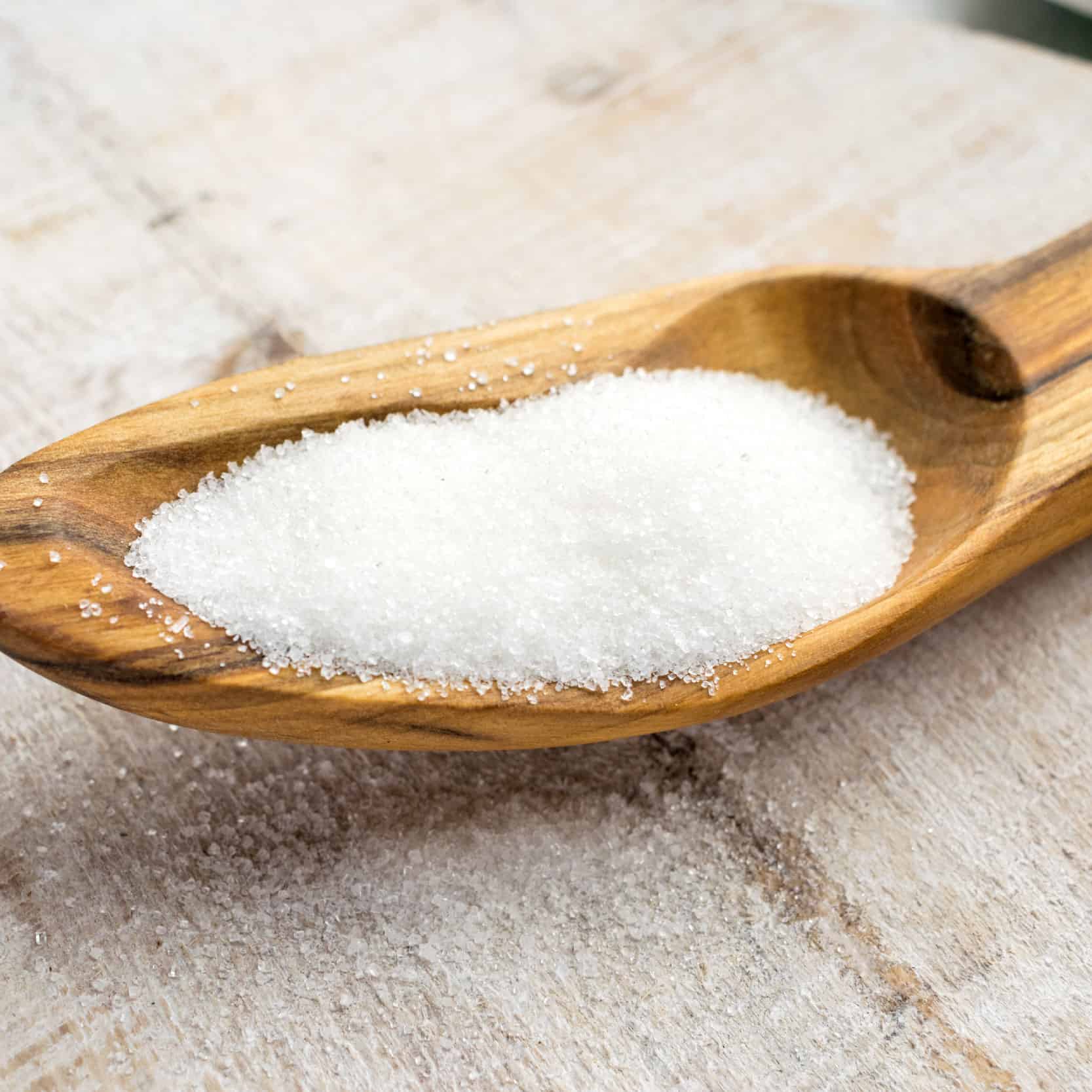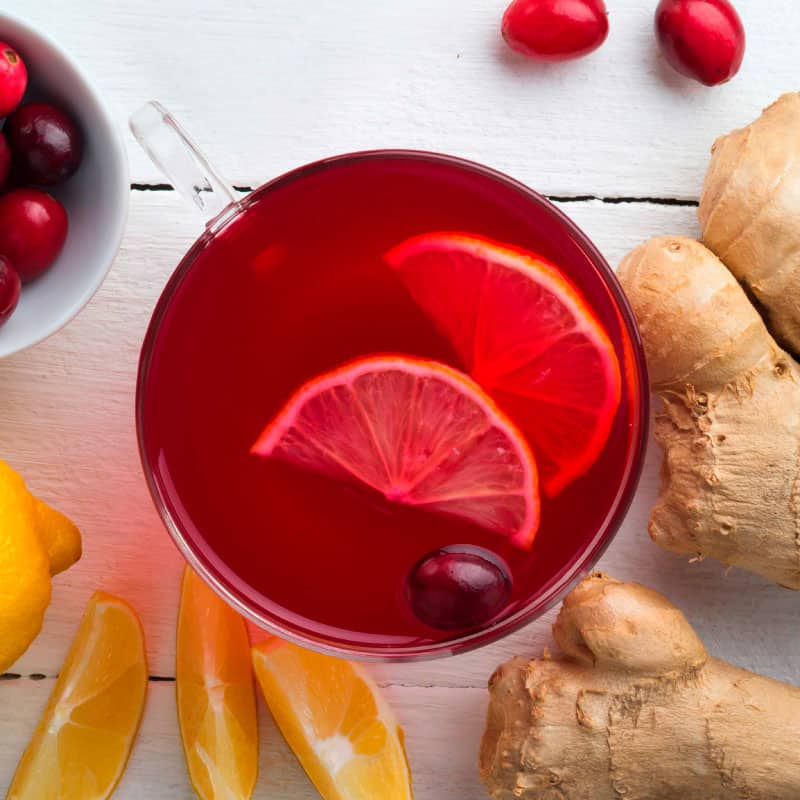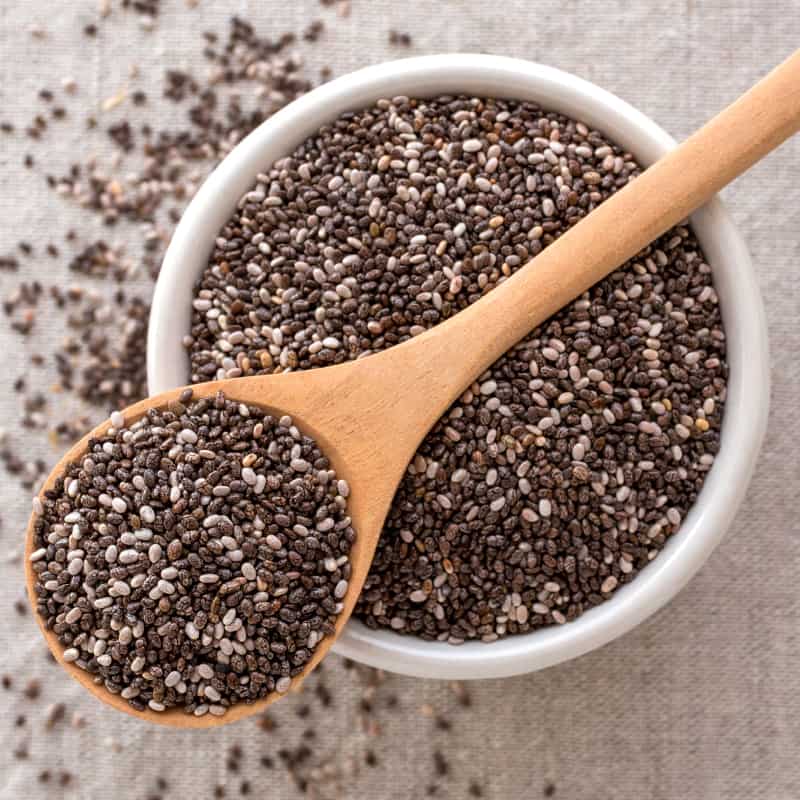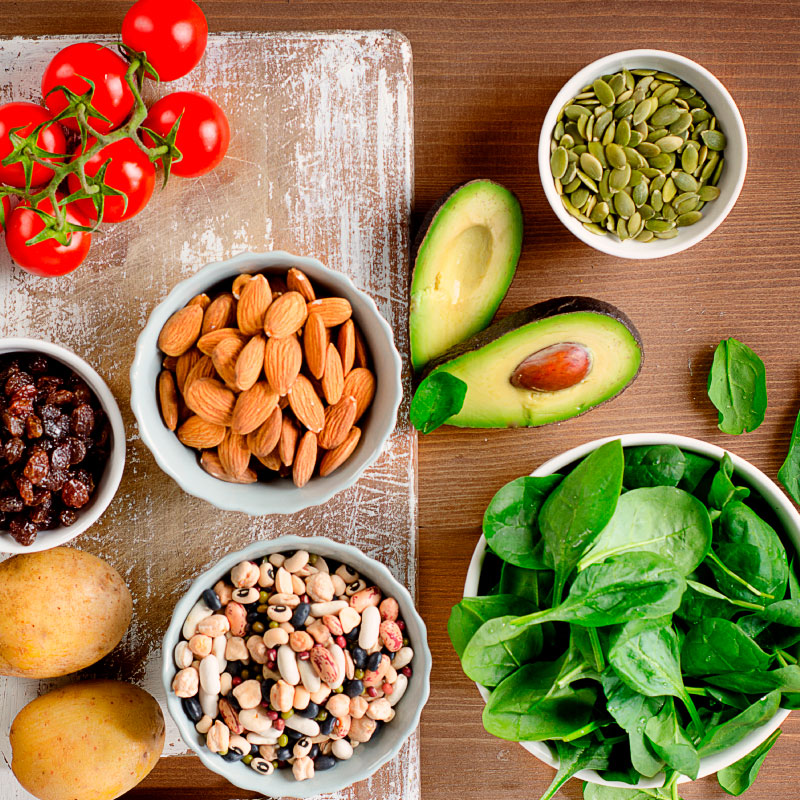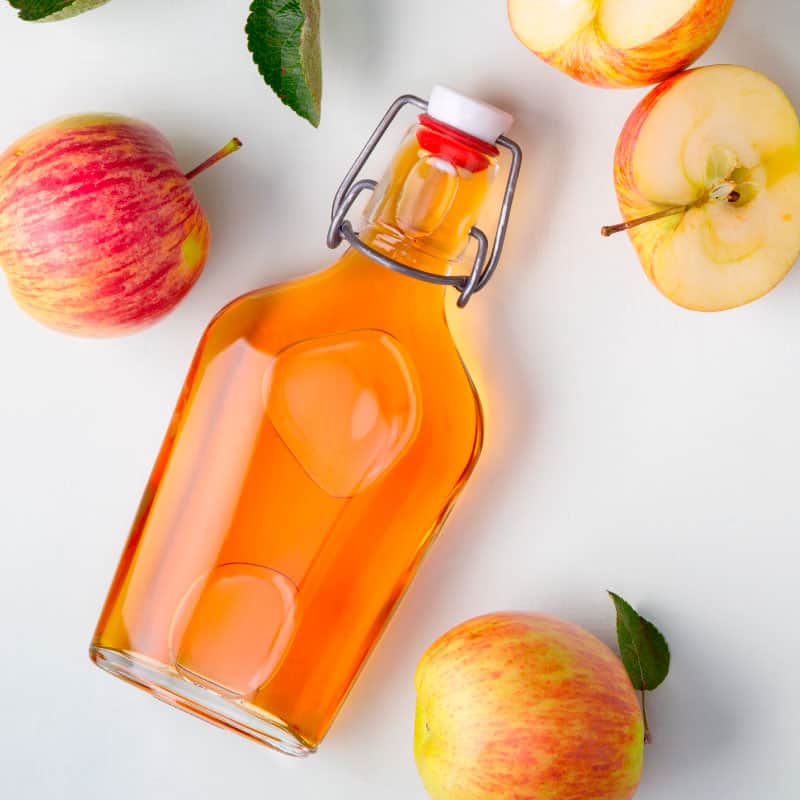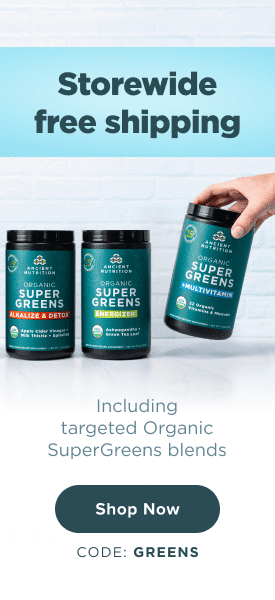This Dr. Axe content is medically reviewed or fact checked to ensure factually accurate information.
With strict editorial sourcing guidelines, we only link to academic research institutions, reputable media sites and, when research is available, medically peer-reviewed studies. Note that the numbers in parentheses (1, 2, etc.) are clickable links to these studies.
The information in our articles is NOT intended to replace a one-on-one relationship with a qualified health care professional and is not intended as medical advice.
This article is based on scientific evidence, written by experts and fact checked by our trained editorial staff. Note that the numbers in parentheses (1, 2, etc.) are clickable links to medically peer-reviewed studies.
Our team includes licensed nutritionists and dietitians, certified health education specialists, as well as certified strength and conditioning specialists, personal trainers and corrective exercise specialists. Our team aims to be not only thorough with its research, but also objective and unbiased.
The information in our articles is NOT intended to replace a one-on-one relationship with a qualified health care professional and is not intended as medical advice.
Ghee: Is It Better Than Butter?
October 10, 2023
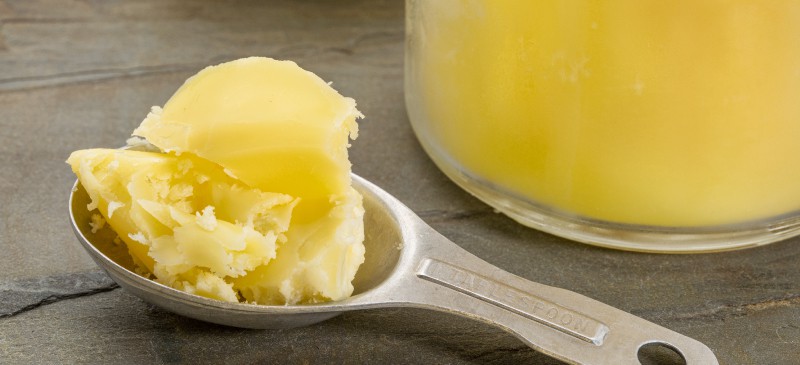
With the surge in popularity of health trends like the ketogenic diet, healthy fats have garnered a lot of attention. Right alongside familiar favorites like olive oil and coconut oil is ghee, a type of fat made by heating butter — ideally grass-fed butter — to boost its natural nutrient profile and flavor. It is full of fat-soluble vitamins and healthy fatty acids, and ghee benefits can range from building stronger bones to enhancing weight loss.
Used for thousands of years and a staple in Ayurvedic healing practices, ghee is one of the most powerful healing foods out there. But what is ghee butter, and why should you add it to your pantry?
What Is Ghee?
Ghee is similar to clarified butter, which is produced by heating butter to remove the milk solids and water. However, in comparing ghee vs. clarified butter, ghee is simmered longer to bring out the butter’s inherent nutty flavor and is left with a higher smoke point than butter, meaning that it can be heated to a higher temperature before it starts to smoke.
Not only that, but ghee is rich in beneficial nutrients and contains several fatty acids that are important to health. Plus, there are numerous benefits of ghee, and some of its components have been shown to do everything from boost weight loss to improve digestion and relieve inflammation.
Ghee has been used for thousands of years, quite literally. It’s truly an “ancient” health food and definitely not a fad. The first known use of butter was back in 2000 B.C. It became very popular in the cooler northern parts of India but didn’t survive well in the southern warmer regions. It’s believed that the southerners started to clarify butter in order to keep it from spoiling.
Ghee quickly was integrated into the diet, into ceremonial practice and into Ayurvedic medicine. It’s believed to promote both mental purification and physical purification through its ability to cleanse and support wellness. Ghee benefits the body both inside and out and is actually used topically as well. Ghee benefits for skin include treating burns and rashes and moisturizing the skin and scalp. Much like coconut oil, it’s a multi-use fat that is healthy in many ways.
Although ghee originates in India, it is also commonly found in South Asian and Middle Eastern cuisines and is used now around the world.
Although fat was once vilified as unhealthy and disease-causing, we are now beginning to understand the importance of including healthy fats in your diet. Today, ghee is recognized not only for its intense flavor and versatility, but for the numerous health benefits associated with it.
Nutrition Facts
Ghee benefits come from the nutrition ghee provides. It’s high in fat and provides an extra dose of several fat-soluble vitamins, such as vitamin A, vitamin E and vitamin K. One tablespoon (14 g) of ghee (clarified butter) contains:
- Calories: 123
- Total Carbohydrates: 0 g
- Fiber: 0 g
- Sugar: 0 g
- Total Fat: 13.9 g
- Saturated Fat: 8.7 g
- Polyunsaturated Fat: 0.5 g
- Monounsaturated Fat: 4 g
- Trans Fat: 0 g
- Protein: 0.04 g
- Cholesterol: 35.8 mg
- Sodium: 0.3 mg (0% DV*)
- Vitamin A: 118 IU (13% DV*)
- Vitamin E: 0.4 mg (3% DV*)
- Vitamin K: 1.2 IU (1% DV*)
*Daily Value: Percentages are based on a diet of 2,000 calories a day.
In addition to the nutrients above, it is also a good source of butyric acid and conjugated linoleic acid, both of which have been associated with a number of health benefits, such as reduced inflammation and increased fat loss.
Benefits
1. It Has a High Smoke Point
The smoke point is the temperature at which an oil begins to burn and smoke. Not only does heating a cooking fat above its smoke point put it at a greater risk of hitting its flash point and causing a fire, but it also breaks down important phytonutrients and causes the fat to oxidize and form harmful free radicals.
Unfortunately, most cooking oils with a high smoke point are less-than-stellar for your health. Canola oil, peanut oil, corn oil and soybean oil are usually genetically modified and also often partially hydrogenated to increase their stability.
Ghee, on the other hand, is an excellent choice for cooking because of its high smoke point and beneficial effects on health. The smoke point of ghee is 485 degrees Fahrenheit, which is much higher than the smoke point of butter at 350 degrees Fahrenheit. This means that you can easily use ghee for baking, sautéing and roasting without the risk of destroying the important nutrients that it contains that provide all these wonderful ghee benefits.
2. It’s Packed with Fat-Soluble Vitamins
Adding a few servings of ghee into your day is an excellent way to squeeze in some extra fat-soluble vitamins. It can help boost your intake of vitamin A, vitamin E and vitamin K, all important nutrients that play a role in everything from maintaining healthy vision to keeping your skin glowing.
This can be especially crucial if you suffer from any conditions like leaky gut syndrome, IBS or Crohn’s, as your body may have difficulty absorbing these fat-soluble vitamins. Ghee benefits your health by providing a boost of these nutrients to help you meet your daily needs.
3. It’s Free of Lactose and Casein
One of the best ghee benefits is that it’s free of lactose and casein protein. Some individuals have a milk allergy, which may stem from a heightened sensitivity to casein, and others may be hypersensitive to lactose. For individuals with a casein allergy, the reaction may include swelling of lips, mouth, tongue, face or throat; hives; or congestion.
Those with a lactose intolerance have a difficult time digesting the milk sugar lactose, but symptoms are generally much less dangerous than a casein allergy. Symptoms of lactose intolerance may include bloating, flatulence, nausea, vomiting, gurgling and cramps. The majority of people who have sensitivities to either casein or lactose don’t have an issue with ghee, as these elements have been removed through skimming and straining.
4. It Contains Conjugated Linoleic Acid
Ghee is jam-packed with conjugated linoleic acid (CLA), a fatty acid associated with a long list of health benefits. Some studies have found that CLA may be effective in reducing body fat, preventing cancer formation, alleviating inflammation and even lowering blood pressure.
Keep in mind that grass-fed dairy provides a higher concentration of this important fatty acid. Opt for grass-fed ghee whenever possible, or be sure to use grass-fed butter if you’re making ghee at home.
5. It’s Loaded with Butyrate
Butyrate, or butyric acid, is a short-chain fatty acid that plays a central role in gut health. Some studies, including those on animals, have suggested that it may help support healthy insulin levels, fight off inflammation, and provide relief for individuals suffering from conditions like Crohn’s disease and ulcerative colitis.
This important fatty acid is also made by the gut flora when you eat fiber. As the primary source of energy for the cells in your colon, butyrate is key to promoting a healthy gut microbiome, which plays an integral role in health and disease.
6. It Has a Strong, Buttery Flavor
By removing the milk solids and water from butter, ghee is left with a stronger, more intense flavor than regular butter. Its taste is also often described as nuttier, richer and deeper than butter. When you’re cooking with ghee, you may find that you’ll need even less to get that same satisfying, buttery flavor.
7. It Strengthens Your Bones
Regularly incorporating a few servings of ghee into your diet can help you meet your vitamin K needs. Vitamin K is essential to many aspects of health, such as blood clotting, heart health and brain function. It’s also incredibly important when it comes to keeping your bones healthy and strong.
This is because vitamin K is directly involved in bone metabolism and increases the amount of a specific protein that is required to maintain the calcium in your bones. In fact, a study published in the American Journal of Clinical Nutrition looked at the diets of 2,591 adults and found that a low intake of vitamin K was associated with a reduced bone mass density in women.
Ghee supplies a small amount of vitamin K but can make a big difference when combined with an overall healthy diet and lifestyle — not to mention all the other ghee benefits you can get.
8. It Promotes Healthy Weight Loss
The medium-chain fatty acids found in healthy fats like ghee and coconut oil can boost fat burning and help ramp up weight loss. A 2015 review comprising 13 trials actually found that medium-chain triglycerides (also including MCT oil) helped decrease body weight, waist and hip circumference, total fat, and belly fat compared to long-chain triglycerides.
Not only that, but CLA, one of the primary fatty acids found in ghee, has also been associated with reduced body fat mass as well.
Curious how to use ghee for weight loss to achieve maximum results? Swap out unhealthy fats like vegetable oils for ghee instead, and try roasting, sautéing or baking your favorite healthy dishes to get the most out of these ghee benefits.
9. It Improves Digestion
As mentioned above, ghee is an excellent source of butyrate, the short-chain fatty acid that is crucial to maintaining optimal digestive health. Butyrate provides energy for the cells in the colon, helps support gut barrier function and fights off inflammation.
Additionally, some studies have suggested that butyrate may provide relief from constipation. A review out of Poland, for example, noted that butyric acid has been shown to reduce pain during defecation and improve peristalsis, or the contraction of muscles in the intestines, to help propel food through the digestive tract.
10. It Relieves Inflammation
Although inflammation can be a normal immune response to help defend the body against foreign invaders, long-term inflammation is believed to contribute to the development of chronic disease.
Ghee contains butyrate, a type of fatty acid that has been shown to inhibit inflammation in some test-tube studies. This could have far-reaching benefits when it comes to preventing inflammatory conditions like arthritis, inflammatory bowel disease, Alzheimer’s, diabetes and even certain types of cancer.
Related: What Is Tallow? Top 5 Reasons to Use This Form of Fat
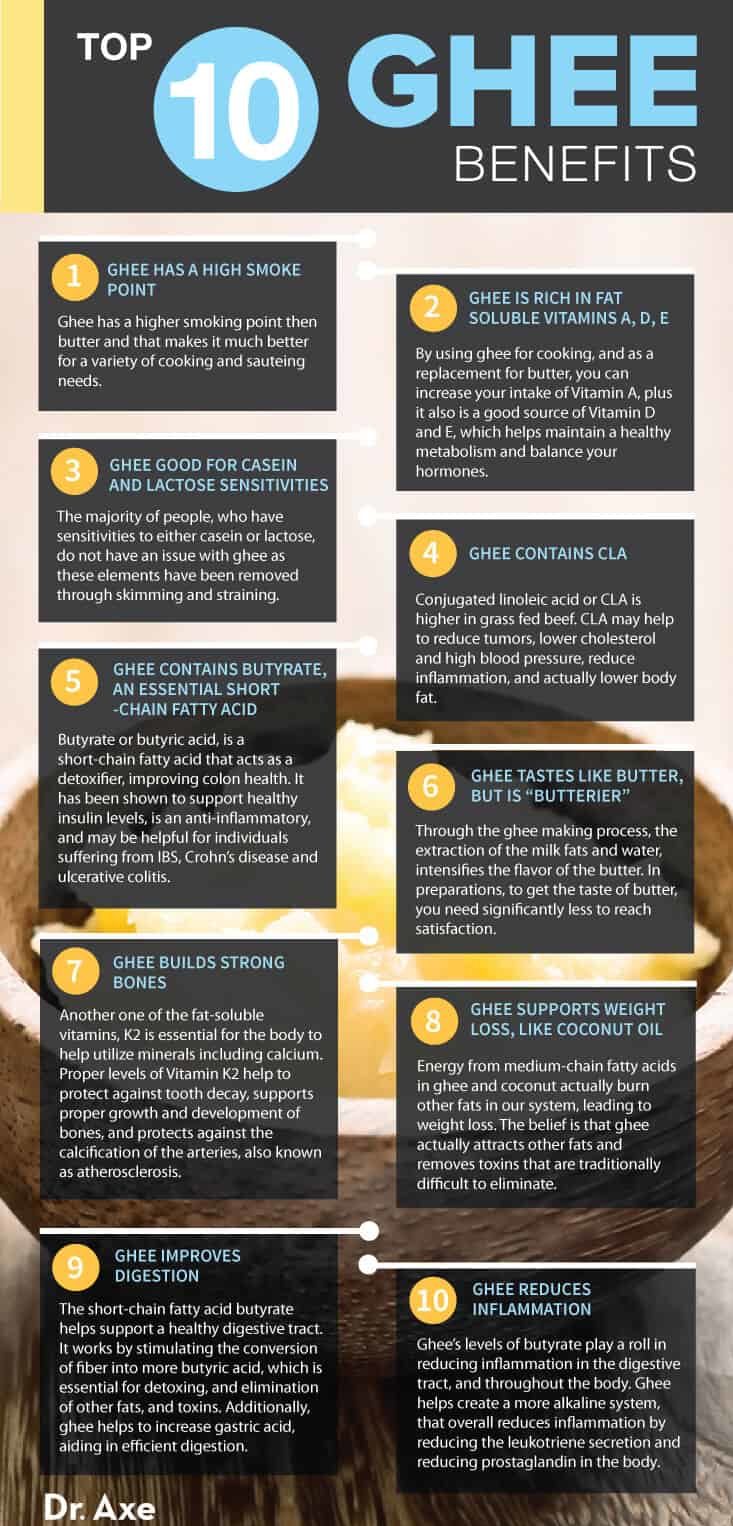
Ghee vs. Butter
Because ghee is made by heating butter to separate the liquid and milk solids from the fat, it shares a similar nutrient profile to butter. Both are high in saturated fat as well as fat-soluble vitamins A, E and K. However, there are some unique differences that set the two apart.
First of all, ghee contains nearly double the amount of short- and medium-chain fatty acids as butter. These types of fats are metabolized differently in the body than long-chain fatty acids, and studies show that they are not associated with heart disease.
Ghee also has a higher smoke point than butter, which means that it can be heated to a higher temperature without the risk of oxidizing and forming harmful free radicals.
Plus, by removing the milk solids from the final product, ghee becomes free of casein and lactose. Many people have allergies or sensitivities to these ingredients, which can result in symptoms like bloating, gas, nausea and abdominal pain.
Finally, there is even a difference in taste between ghee and butter. While butter is typically described as creamy and sweet, ghee boasts a nutty, rich and deeper, more intense flavor.
Where to Find and How to Use
Ready to start adding this healthy fat into your diet and wondering where to buy ghee? Fortunately, ghee is widely available at most grocery stores and health shops and can typically be found in the ethnic food section or next to other oils, such as coconut oil. You can also easily purchase ghee online from many major retailers or even try your hand at making ghee at home.
Be sure to look for grass-fed, organic ghee whenever possible to ensure you’re getting the maximum amount of nutrients without extra added ingredients.
Ghee is a very versatile ingredient, and there are a multitude of potential ghee uses. In fact, it can be used in place of just about any other cooking oil or fat. Try swapping it in place of butter, vegetable oil or coconut oil in your favorite recipes to add a burst of flavor and get all the wonderful ghee benefits.
How to Make
Making ghee is simple and can be done with minimal ingredients right from your own kitchen. Plus, making it at home can help it retain more nutrients than the commercial ghee that has been made in a centrifuge.
Ingredients
- 1 pound of grass-fed unsalted butter
- deep, wide-bottomed skilled
- wooden spoon or heat-resistant spatula
- cheesecloth
- mesh skimmer
- mesh strainer
- glass jar
Directions
- Place one pound of butter into a deep skillet over medium-low heat and watch it melt slowly. Note that it may spatter a bit as the butter begins to bubble. Stir with a long-handled spoon and maintain a simmer.
- Continue to simmer, stirring occasionally, for 20–30 minutes until the milk proteins have separated from the gold liquid. There will be white foam on the top and some bits of milk fats on the bottom of the pan. Gently skim the foam off with the mesh skimmer and discard. You may have another “foam up” stage, and this is good. Skim and discard once again. Now, the milk fats on the bottom of the pan will continue to brown. Again, this is a good thing — this is where the distinctive nutty flavor comes from.
- Allow it to simmer until it becomes golden brown but not burnt. Keep a watchful eye because at this stage the ghee can quickly burn. Remove from heat and allow to cool to room temperature. Place several layers of cheesecloth in the mesh strainer (or use nut milk bags) and slowly pour the butter into the jar. The result? A beautiful golden clarified butter that is liquid gold.
- While it will firm up a bit at room temperature, keep in the refrigerator if you desire a spreadable ghee. Ghee will remain fresh at room temperature for several weeks when sealed properly and can last months in the refrigerator. Because fats tend to absorb other flavors, it’s essential that ghee is kept properly sealed, whether in the refrigerator or on the counter.
Risks and Side Effects
One of the primary differences between ghee vs. coconut oil is that ghee is made from butter and is not vegan. If you’re following a vegan diet, it’s best to stick to coconut oil or other healthy dairy-free fats.
In moderation, ghee can be an incredibly healthy dietary addition. However, it is possible to overdo it, and eating too much can actually have a negative impact on your health. Like any type of fat, if eaten in excess, ghee disadvantages can range from diarrhea to indigestion. Long-term, an extremely high-fat diet may also result in issues like weight gain and heart disease.
Additionally, some studies have found that the cholesterol in ghee may oxidize when exposed to high heat. The oxidation of cholesterol is linked to several adverse health effects, including heart disease and even cancer.
However, if enjoyed in moderate amounts, most research indicates that ghee can make a nutritious addition to the diet. For best results, pair it with a balanced diet and other heart-healthy fats, like coconut oil and olive oil.
Final Thoughts
- Ghee is made by heating butter to remove the milk solids and water. However, it is heated longer than clarified butter to bring out the butter’s inherent nutty flavor.
- It has a high smoke point, is free of lactose and casein, and is high in beneficial compounds like CLA and butyrate. It also contains several fat-soluble vitamins, including vitamins A, E and K.
- Ghee benefits include improving digestion, reducing inflammation, promoting weight loss and strengthening the bones.
- Compared to butter, it has a higher smoke point, more intense flavor, and a greater amount of short- and medium-chain fatty acids — not to mention a host of ghee benefits.
- Incredibly versatile and easy to use, ghee can replace other fats in your diet and can be used for roasting, sautéing or baking a variety of dishes.




